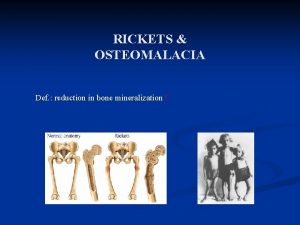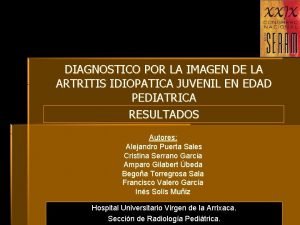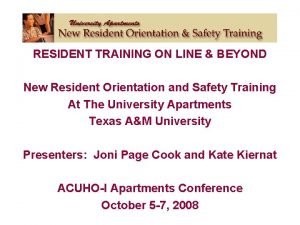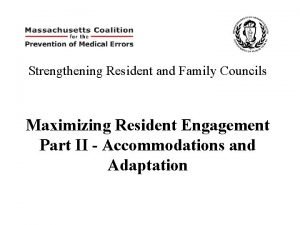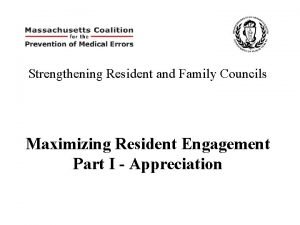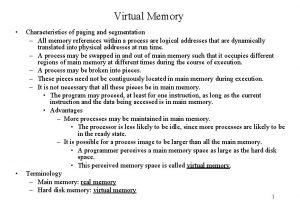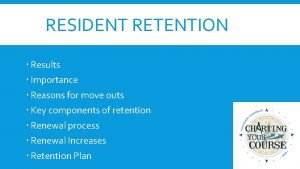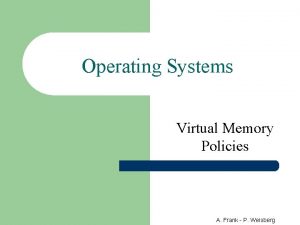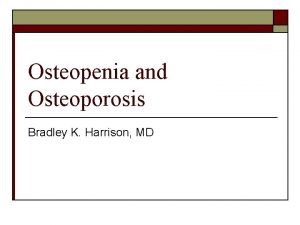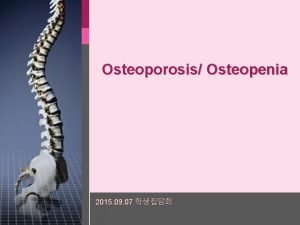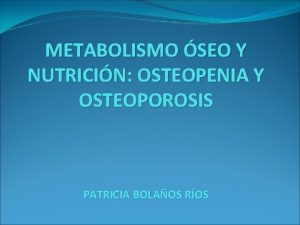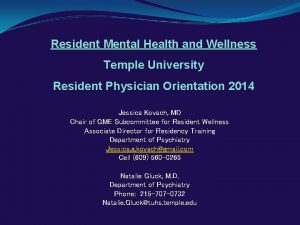Caring for the Resident with Osteopenia and Risk











- Slides: 11

Caring for the Resident with Osteopenia and Risk for Fractures Brandy Shannon, RN, MSN Educator CCC and NCU September 2014

Purpose • To educate the health care provider on the bone condition Osteopenia and Risks for Fracture associated with this condition. 2

Objectives • Define Osteopenia • Explain one of the major causes of Osteopenia • State the main risk factor associated with Osteopenia. • Give 2 examples of how to manage care for a resident who may have osteopenia. • Explain how to safely transfer a resident with a fracture. 3

What is osteopenia? • Osteopenia is a condition in which there is a decrease in bone density, which leads to weak bones and a high risk of bone fractures (broken bones). 4

What can cause osteopenia? • Osteopenia can be associated with genetics or family history. • Hormonal Causes and/or medications, such as: steroids, seizure medications, diuretics and thyroid medications. • Thin frame (body structure) • IMMOBILITY • Medical condition (such as Chronic Renal Failure) 5

What are signs and symptoms of osteopenia? • It may be hard to know if your patient has osteopenia, since osteopenia does not cause pain unless there is a broken bone (fracture). A broken bone can be very painful. 6

Why is it important to know about osteopenia? • The main importance is to know that there is a HIGH risk for bone fractures in patients with osteopenia. • Certain medical conditions put your resident at risk for osteopenia. These include: Asthma, Chronic Renal Failure, Cerebral Palsy, Multiple sclerosis, B 12 Deficiency, Cancer, and Epileptic treatments, just to name a few. 7

How do I care for a resident with osteopenia? • Care is aimed at prevention of falls and fractures by using proper body mechanics and using assistive devices, such hoyers lifts. • Observe safety measure, such as: good lighting, removal of clutter, lock wheelchairs, ensure beds are at the lowest level before leaving the bedside and ensure side rails are up. • Maintain the patient’s activity at the highest level possible since immobility is associated with spontaneous fractures. • Encourage the resident to preform as many ADLs as possible and assist with range of motion to help keep the residents joints flexible. 8

How do I care for a resident with osteopenia? • Check the patient’s skin daily for redness, warmth, and new sites of pain, which are all indicators of new fractures. • Check orthotic devices for proper fit, patient tolerance, and skin irritation. • Make sure your residents are well hydrated. • It is important that your resident has a well balance of vitamin D and phosphorus in their system. 9

How should I transfer my resident who may have a fracture? • When turning or transferring the resident make sure to plan movement prior to actually moving the resident. • Make sure to take your time and move slowly. • Make sure you always have help when turning or transferring your patient, ensuring that you stabilize the fractured extremity. • NEVER tug or jerk your patient, especially their limbs. 10

Thank You
